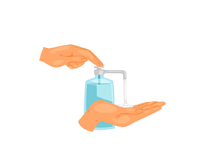Methylene Blue
Methylene Blue is a synthetic dye with various medicinal uses, particularly for treating methemoglobinemia, a condition where the blood cannot carry oxygen effectively. It is also used in diagnostic procedures, as a stain in certain medical tests, and as an antidote for poisoning. Methylene Blue works by helping to restore normal blood oxygen levels in individuals suffering from methemoglobinemia. It is available in various forms for medical use under professional guidance.
Uses of Methylene Blue
- Treats methemoglobinemia, a condition that affects the blood's ability to carry oxygen
- Used in certain diagnostic medical tests as a staining agent
- Helps treat urinary tract infections (UTIs) as part of combination therapy
- Used for cyanide poisoning as an antidote
How Methylene Blue works
Methylene Blue works by converting methemoglobin back into hemoglobin, allowing the blood to carry oxygen more effectively. It helps in the treatment of methemoglobinemia by restoring the normal function of red blood cells and improving oxygen delivery throughout the body.
Benefits of Methylene Blue
- Effectively treats methemoglobinemia by restoring oxygen-carrying ability of the blood
- Useful as a diagnostic aid in various medical tests
- Helps manage cyanide poisoning when used as part of a treatment regimen
- Can aid in treating certain urinary tract infections in combination with other treatments
How to take Methylene Blue
Methylene Blue is typically administered by a healthcare professional either intravenously or orally, depending on the condition being treated. For methemoglobinemia, it is often given as an injection in a medical setting. The dosage and method of administration will vary based on the medical condition and the patient's health status. Always follow the prescribed instructions from your healthcare provider.
Type of Dosage Available
- Injection
- Oral solution
Side effects of Methylene Blue
- Common side effects include nausea, vomiting, and diarrhea
- May cause dizziness or confusion in some cases
- Rare side effects include allergic reactions like rash, itching, or swelling
- Long-term use may cause discoloration of urine (blue or green color)
Safety advice
- Consult a doctor before using Methylene Blue if you are pregnant or breastfeeding
- Avoid using if allergic to any of its components
- Monitor for any signs of allergic reactions, especially during the first use
- Follow the recommended dosage carefully to avoid side effects
- Ensure it is administered by a healthcare professional in proper doses for conditions like methemoglobinemia
Frequently Asked Questions (FAQs)
Q: What is Methylene Blue used for?
A: Methylene Blue is primarily used to treat methemoglobinemia, cyanide poisoning, and as a diagnostic stain in medical tests. It also helps in treating certain urinary tract infections.
Q: How is Methylene Blue administered?
A: It is usually administered intravenously or orally, depending on the medical condition. A healthcare provider will determine the method of administration.
Q: What should I do if I experience side effects?
A: If you experience side effects such as nausea, vomiting, or allergic reactions, contact your healthcare provider immediately. Do not use the medication again until advised by a doctor.
Q: Can Methylene Blue cause urine discoloration?
A: Yes, it may cause urine to turn blue or green. This is a harmless effect and should subside once the medication is stopped.
Q: Is Methylene Blue safe for pregnant or breastfeeding women?
A: Consult your doctor before using Methylene Blue if you are pregnant or breastfeeding to ensure it is safe for you and your baby.
Download India's most affordable pharmacy app
- Compare with medicine prices
- Save upto 90% on your medicine bills

Temperature Controlled storage and delivery

Regular Sanitization

Disinfected Packaging














 Added!
Added!